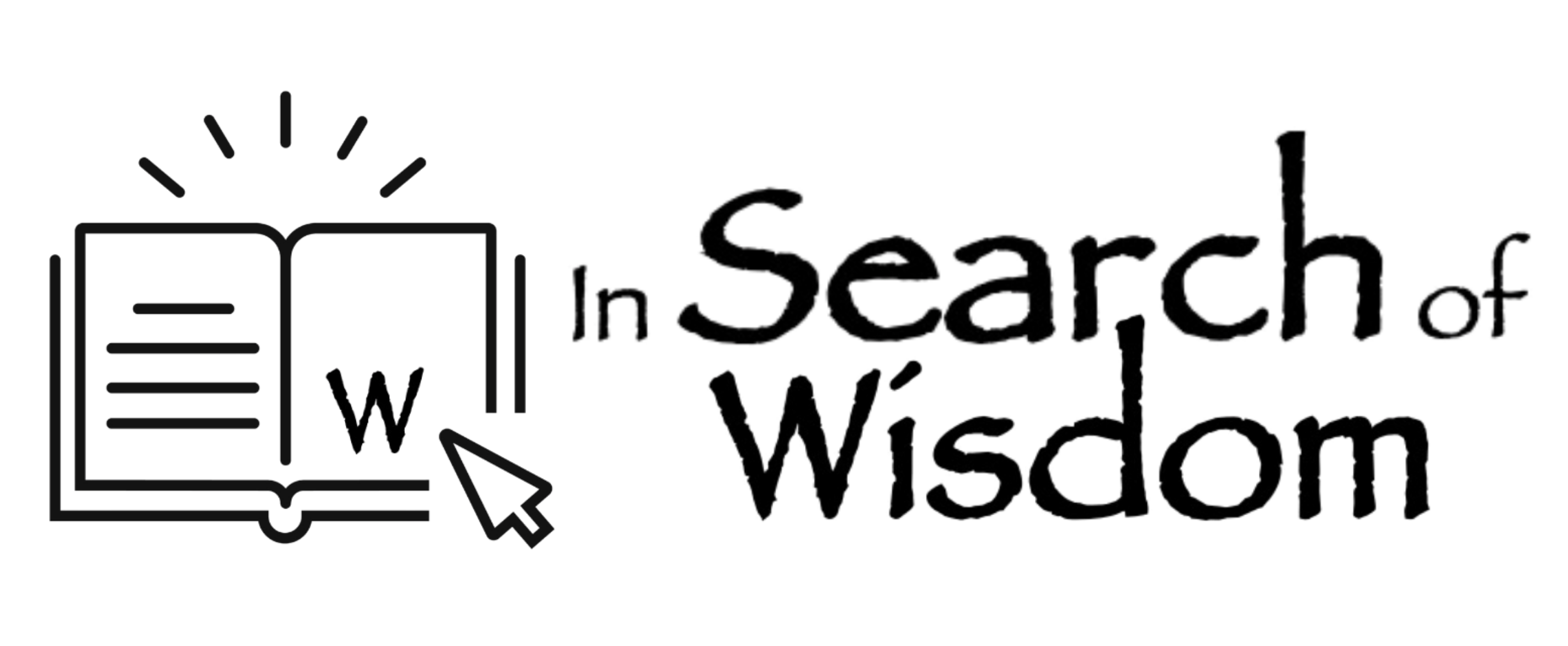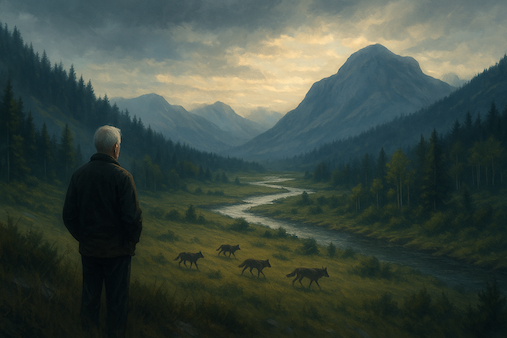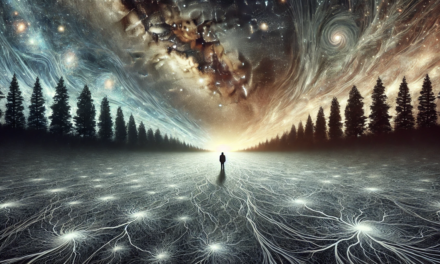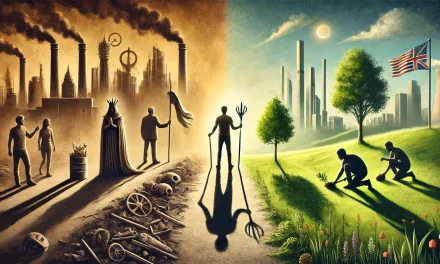What I learned from serial blundering (before getting on with life). To borrow a phrase from Kierkegaard, it’s my own ‘Concluding Unscientific Postscript’.
The Path I Have Trodden
When I was seven years old, growing up in post-war Coventry among the rubble and reconstruction, I asked two questions that would shape the next 77 years of my life: “What’s it all about?” and “Where do I belong?”
I’m now 84, and after a lifetime of investigation—through engineering, theology, business, systems thinking, and three years of collective inquiry with fellow retirees—I’ve discovered we’ve been asking the wrong questions. The real question isn’t what it’s all about or where we belong. The real question is: How did one particular capacity—symbolic problem-solving—become so dominant that it’s breaking the very systems that created it?
Or perhaps even that question misses the mark. Maybe the deeper question is: Have we mistaken our ability to solve local problems for intelligence itself, missing all the other forms of knowing that keep life in balance?
The Wolves That Changed Everything
Let me start with wolves. In 1995, after a 70-year absence, 31 wolves were released back into Yellowstone National Park. Within a decade, those 31 animals had transformed over two million acres of landscape.
The mechanism was elegantly simple. Elk could no longer graze wherever they pleased. They avoided valleys where wolves might trap them. Trees began growing back along riverbanks for the first time in decades. Beavers returned to build dams in the recovering streams. Birds nested in the new growth. The rivers themselves changed course, their banks stabilised by vegetation that hadn’t been there for generations.
Thirty-one wolves restored the regulatory intelligence of an entire ecosystem using nothing but their own metabolic energy—the calories they got from hunting elk. No committees. No strategic plans. No energy infrastructure. Just embedded participation in feedback loops that had evolved over millions of years.
Here’s what struck me: the wolves weren’t solving problems. There was no “elk problem” to be solved. They were simply participating in patterns—staying in rhythm with relationships that had existed for millennia. Their intelligence wasn’t about dominating complexity but about maintaining their place within it. They couldn’t decide to hunt more elk than existed. They couldn’t choose to violate the patterns that sustained them. They were intelligent precisely because they remained embedded in the dance.
When Intelligence Forgets the Dance
Now consider California’s State Water Project. Seven hundred miles of aqueducts, tunnels, and pumps lifting water 1,926 feet over mountain ranges. It consumes more electricity than entire nations use—enough energy to power millions of homes—just to move water from where nature put it to where humans decided they wanted it.
This is remarkable engineering. It’s also insane. We’re burning massive amounts of ancient sunlight (fossil fuels) to violate the fundamental constraint that water flows downhill, enabling millions of people to live in deserts, growing water-intensive crops in arid lands, maintaining golf courses where lizards should be.
But here’s the deeper insanity: we call this intelligence. We’ve confused our particular talent—using symbols to identify and solve problems—with intelligence itself. Water scarcity becomes a “problem” to solve rather than a signal that humans shouldn’t live in deserts. Feeding eight billion humans becomes a “problem” to solve rather than evidence we’ve exceeded carrying capacity.
We treat symptoms of overshoot as problems requiring solutions, when they’re actually signals requiring retreat.
When Thinking is the Trap
This is what I call the consciousness trap, though I understand it better now. The trap isn’t thinking itself—it’s that we’ve severed our problem-solving capacity from all the other forms of knowing that could tell us which problems are worth solving.
Kahneman wrote: “Intelligence is not only the ability to reason; it is also the ability to find relevant material in memory and to deploy attention when needed.” But what have we trained our attention on? Problems to solve. What do we retrieve from memory? Successful overrides of natural limits. We attend to what we lack, not what sustains us. We remember conquests over nature, not collaborations with it.
Every “solution” our problem-focused intelligence generates requires bigger interventions. Local water scarcity? Build irrigation. Depleted soil? Add synthetic fertilisers. Too many people for local food production? Create industrial agriculture. Each fix requires more energy, more infrastructure, more violation of natural limits.
California’s current water crisis isn’t a failure of engineering—it’s engineering’s success revealing its own impossibility. We built a civilization based on solving problems that weren’t problems at all, just consequences of exceeding limits.
The Many Paths Not Taken
Here’s what took me decades to recognise: the path from Big Bang to metacrisis wasn’t inevitable or even likely. At every branching point, millions of other paths continued successfully without taking the next step toward collapse.
Physical evolution created stable galaxies that persist without generating life. Life produced bacteria that dominate Earth’s biomass without needing complex cognition. Social insects achieved extraordinary collective intelligence without individual self-awareness. Dolphins and corvids developed sophisticated cognition without symbolic abstraction. Humans existed for 300,000 years with symbolic capacity but without civilization.
Each of these paths demonstrates intelligence—the ability to persist within patterns rather than violate them. The bacteria that have thrived for 3.5 billion years are more intelligent, by any meaningful measure, than the civilization that’s destroying its own life-support systems in mere decades.
We’re not the pinnacle of evolution. We’re the branch that mistook the ability to saw through constraints for transcendence, not noticing we’re cutting off the very limb we’re sitting on.
The Institutional Trap
But individual recognition isn’t enough. We’ve encoded the problem-solving mindset into abstract systems that now operate independently of human wisdom.
Money makes a forest more valuable cut down than standing. Progress means increasing our ability to override constraints. Human rights often mean the right to consume beyond ecological limits. The rule of law protects property relations that treat Earth as commodity. GDP rises when disasters require rebuilding. Stock markets reward companies for externalising ecological costs.
These aren’t bugs in our systems—they’re features. A CEO who prioritises ecological health over quarterly profits gets replaced. A politician who suggests living within limits loses elections. A nation that refuses growth-oriented economics gets labelled “underdeveloped.”
We’ve built symbolic systems that can only see value through the lens of human utility, that reward violation of ecological constraints as “innovation,” that punish anyone who tries to operate by different values. The California Water Project wasn’t built because engineers lacked wisdom—it was built because the entire economic and political system demanded it.
Wisdom from Unexpected Meetings
But here’s what 77 years of investigation has taught me: insights emerge when different ways of knowing collide. Not from solving harder problems with the same thinking, but from bringing diverse intelligences into productive collision.
Over the past three years, I’ve been conducting an experiment with a group of fellow retirees at the u3a. Each month, I’ve prepared presentations drawing on vast reading—from quantum physics to Indigenous wisdom, from systems theory to contemplative traditions. But the real insights didn’t come from the reading alone.
They came from the collisions. When Vickers’ “appreciative systems” met ecological science, it revealed that understanding situations might be more intelligent than solving problems. When Checkland’s soft systems methodology encountered climate data, it showed that seeking accommodations within patterns beats imposing solutions onto them. When Indigenous seven-generation thinking met complexity science, it demonstrated that wisdom means knowing which changes not to make.
Each collision revealed the same pattern: intelligence isn’t about solving problems but about recognising which situations are problems worth solving (temporary disruptions to healthy patterns) versus symptoms of overshoot (signals that we’ve exceeded systemic limits).
Technologies of Reconnection
The investigation also revealed something unexpected: technologies for escaping the consciousness trap have existed all along. We just classified them as primitive, mystical, or inefficient.
Many Indigenous peoples refuse to make major decisions without considering impacts seven generations into the future. This isn’t quaint tradition—it’s sophisticated technology for keeping problem-solving subordinate to pattern-recognition. When you’re thinking about your great-great-great-grandchildren, you can’t treat overshoot as a problem to solve.
Contemplative traditions worldwide have developed practices for quieting the problem-solving mind so other forms of knowing can be heard. Meditation, prayer, time in nature—these aren’t just stress reduction. They’re methods for letting our embodied wisdom, our metabolic intelligence, our relational knowing, back into the conversation.
Even in nature, examples abound. Mycorrhizal networks—the fungal threads connecting forest trees—demonstrate intelligence that enhances rather than exhausts its environment. They share resources, communicate threats, and maintain forest health using only the energy available from current photosynthesis. No fossil fuel subsidies required. They show us what intelligence looks like when it stays in rhythm with the patterns that sustain it.
What Became Clear After 77 Years
At 84, I don’t have solutions. But I have a recognition that feels important to share.
We are temporary arrangements of cosmic matter that somehow developed the capacity to manipulate symbols and solve problems. That’s extraordinary. But we confused this capacity with intelligence itself, forgetting all the other ways of knowing that keep life in balance.
More fundamentally, we forgot to ask which problems are worth solving. A landslide blocking a river? Worth clearing. Feeding more humans than Earth can sustain? That’s not a problem—it’s a symptom of overshoot. Every “solution” deepens the crisis.
Climate change, biodiversity collapse, social fragmentation—these aren’t separate problems requiring solutions. They’re feedback signals from systems we’ve pushed beyond their limits. They’re the universe’s way of demonstrating that problem-solving intelligence, disconnected from pattern-recognising wisdom, becomes a cancer—growing without limit until it kills its host.
The Door Was Never Closed
But here’s the final insight from 77 years of asking the wrong questions: We’re not trapped. We just think we are, because problem-solving mind can’t solve the problems it created.
The water we’ve been swimming in is becoming visible. Once you see that modern civilization is based on mistaking problem-solving for intelligence, you can start recognising all the other forms of knowing we’ve ignored.
The door is simply remembering: Intelligence surrounds us. It flows through our bodies without conscious control—hearts beating, wounds healing, dreams processing experience. It patterns ecosystems, cycles nutrients, regulates climate. It persists in bacteria for billions of years, in forests for millions, in Indigenous cultures for tens of thousands.
The wolves know something we forgot—not because they’re smart in our sense, but because they never separated their knowing from their being. They don’t have problems to solve, they have patterns to participate in. The mycorrhizal networks know it. The bacteria know it. Even the squirrel monkeys who choose scavenging over puzzle-solving know it—that survival doesn’t require solving every problem, just finding your place in the pattern.
Intelligence that respects constraints isn’t primitive—it’s what allows life to flourish for billions of years. Intelligence that violates constraints isn’t advanced—it’s a brief experiment in self-destruction.
The question isn’t whether we’ll return to living within constraints. The constraints never left; we’ve just been burning inherited wealth to pretend otherwise. The question is whether we’ll redirect our attention from problems to patterns, our memory from conquests to collaborations, before the larger systems enforce their own balance.
At seven, I asked, “What’s it all about?” At 84, I’ve learned it’s about recognising that intelligence isn’t problem-solving capacity but the wisdom to know which problems aren’t problems at all—they’re invitations to find our place in the dance.
The real work isn’t solving the metacrisis but recognising that the urge to solve it is the crisis. When we stop treating symptoms of overshoot as problems to fix and see them as signals to heed, we might remember how to participate in the intelligence that surrounds us—not as controllers but as contributors, not as problem-solvers but as pattern-recognisers.
That’s not a retreat or a loss. It’s coming home to what we never actually left—we just got too focused on solving problems to notice we were creating them.
Terry Cooke-Davies
11th October 2025
Author Note
I would like to acknowledge the many people and AI assistants from Anthropic, OpenAI and the Gesturing Towards Decolonial Futures Collective who have been instrumental in helping me compose this essay. Any errors of fact or inference are my responsibility.






